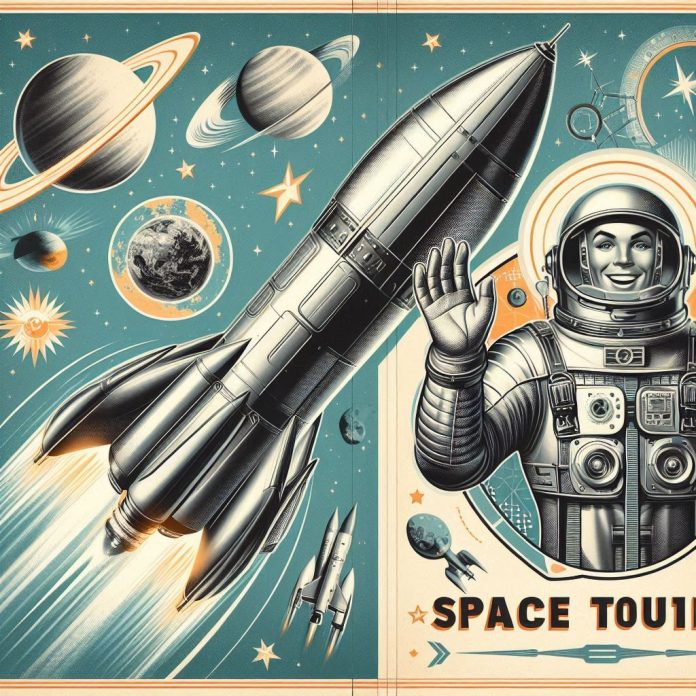As I sit down to write this article, I find myself contemplating the vastness of space and the incredible advancements in technology that have brought the concept of space travel closer to reality than ever before. For travel and tech enthusiasts like us, the idea of exploring the cosmos is not just a dream; it is becoming an achievable goal. In this article, I will delve into the current state of space travel, the key players in the industry, and what the future holds for those of us eager to embark on interstellar journeys.
The Evolution of Space Travel
Space travel has come a long way since Yuri Gagarin became the first human to orbit the Earth in 1961. The initial goals of space exploration were primarily scientific, with astronauts and cosmonauts venturing into the unknown to gather data and conduct experiments. However, as technology has advanced and the commercial sector has taken a keen interest in space, we are now on the brink of a new era—one where space travel is not just for the elite few, but for anyone willing to pay the price of a ticket.
From Government to Private Enterprise
Historically, space travel was largely funded and conducted by government entities such as NASA and Roscosmos. Today, private companies have taken the reins. Organizations like SpaceX, Blue Origin, and Virgin Galactic have emerged, driven by the vision of making space accessible to everyone. This shift has not only fostered innovation but also significantly reduced the costs associated with space travel.
For example, SpaceX’s Falcon 9 rocket has made headlines by drastically lowering launch costs through its reusable rocket technology. This has opened doors for not just governmental missions but also commercial satellite deployments and even plans for interplanetary travel.
The Current Landscape of Space Tourism
As I explore the current landscape of space tourism, I am excited to see how close we are to experiencing space travel firsthand. Companies are offering a range of experiences, from suborbital flights to orbital missions, appealing to diverse groups of space enthusiasts.
Suborbital Flights
Suborbital flights provide a thrilling experience without the need for extensive training or a long-term commitment. Companies like Virgin Galactic and Blue Origin are leading the charge in this segment.
- Virgin Galactic offers a unique experience aboard its SpaceShipTwo, where passengers will experience a few minutes of weightlessness and breathtaking views of Earth before returning safely.
- Blue Origin, with its New Shepard rocket, promises a similar experience, allowing individuals to experience the thrill of space travel and the curvature of the Earth.
Both companies have begun to offer flights to the public, and the excitement surrounding these journeys is palpable.
Orbital Missions
For those seeking a more immersive experience, orbital missions are on the horizon. SpaceX is at the forefront, having successfully launched private citizens to the International Space Station (ISS) through its Crew Dragon spacecraft.
- In 2021, SpaceX’s Inspiration4 mission marked a significant milestone as the first all-civilian orbital mission. This mission not only showcased the potential of private space travel but also raised significant funds for charitable causes.
As technology progresses, we can expect more companies to join the race, ultimately making orbital missions accessible to a broader audience.
The Role of Technology in Space Travel
The evolution of space travel is deeply intertwined with technological advancements. Innovations in propulsion systems, spacecraft design, and life support systems have all contributed to making space travel safer and more feasible.
Propulsion Systems
One of the critical areas of focus is propulsion systems. Traditional rocket engines are being supplemented by new technologies that promise faster and more efficient travel.
- Ion propulsion is one such technology that uses electric fields to accelerate ions, providing continuous thrust over long periods. This could be a game-changer for deep space missions, potentially allowing us to reach destinations like Mars more efficiently.
Spacecraft Design
The design of spacecraft has also evolved significantly. Modern spacecraft are built with reusability in mind, which not only reduces costs but also minimizes environmental impacts.
- SpaceX’s Crew Dragon is a prime example of this innovation. Designed for multiple missions, it represents a shift towards sustainable space travel.
Life Support Systems
Life support systems are essential for long-duration missions, and advancements in this area are crucial.
- Technologies that recycle air and water, along with growing food in space, are being developed to sustain astronauts on extended missions. As we look toward exploring Mars and beyond, these systems will be vital for human survival.
Challenges to Overcome
Despite the promising advancements, challenges remain. As I reflect on the future of space travel, I recognize several key hurdles that we must address.
Safety Concerns
Safety is paramount in any form of travel, and space travel is no exception. High-profile incidents, such as the Challenger and Columbia disasters, serve as stark reminders of the risks involved.
- Companies must prioritize rigorous safety standards and transparent reporting to build public trust in space tourism.
Regulatory Hurdles
The regulatory landscape surrounding space travel is complex and still evolving. Governments worldwide are working to establish frameworks that ensure safety while fostering innovation.
- Collaboration between private companies and regulatory bodies will be essential to navigate these challenges effectively.
Environmental Impact
As we venture into space, it is crucial to consider the environmental implications. The launch of rockets generates significant emissions and can contribute to atmospheric pollution.
- Sustainable practices, such as developing eco-friendly propulsion systems and minimizing waste, will be vital as we expand our presence in space.
The Future of Space Travel
Looking ahead, the future of space travel is bright, and I am excited to witness the developments that will shape our journey into the cosmos.
Mars Colonization
One of the most ambitious goals in space travel is the colonization of Mars. SpaceX has plans to send humans to Mars within the next decade, with the ultimate vision of establishing a sustainable human presence on the Red Planet.
- As technology advances and our understanding of Mars improves, the dream of becoming a multi-planetary species may soon be within our reach.
Space Habitats
The concept of space habitats is also gaining traction. Organizations like Bigelow Aerospace are working on inflatable habitats that could be deployed in orbit or on other celestial bodies.
- These habitats could serve as research stations, tourist destinations, or even homes for future colonists.
Interstellar Travel
While interstellar travel may seem like a distant dream, researchers are exploring concepts like the Alcubierre drive, which theoretically allows for faster-than-light travel.
- Though still in the realm of theoretical physics, the pursuit of such technologies hints at the limitless possibilities that lie ahead.
Conclusion
As I conclude this exploration of the current state and future possibilities of space travel, I am filled with hope and excitement. The advancements in technology and the growing interest from private enterprises signal that the dream of interstellar travel is becoming a reality in reach.
For those of us who are travel and tech enthusiasts, the prospect of venturing beyond our planet is not just an abstract concept but an impending adventure. With each technological leap, we come closer to experiencing the wonders of space firsthand, and I can’t wait to see what the future holds.





.jpg?w=100&resize=100,70&ssl=1)
